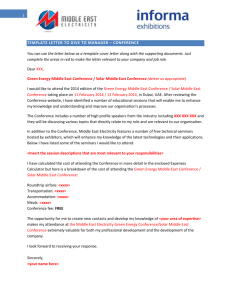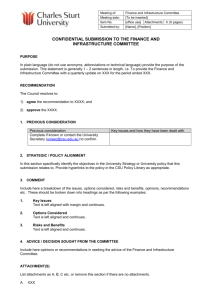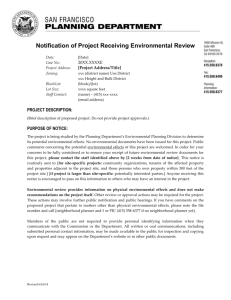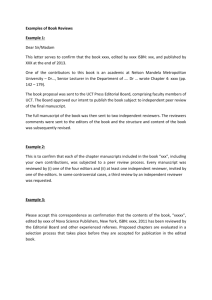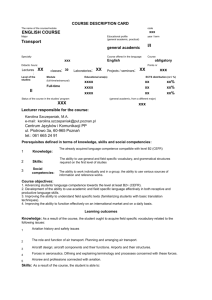Educational History - Char
advertisement
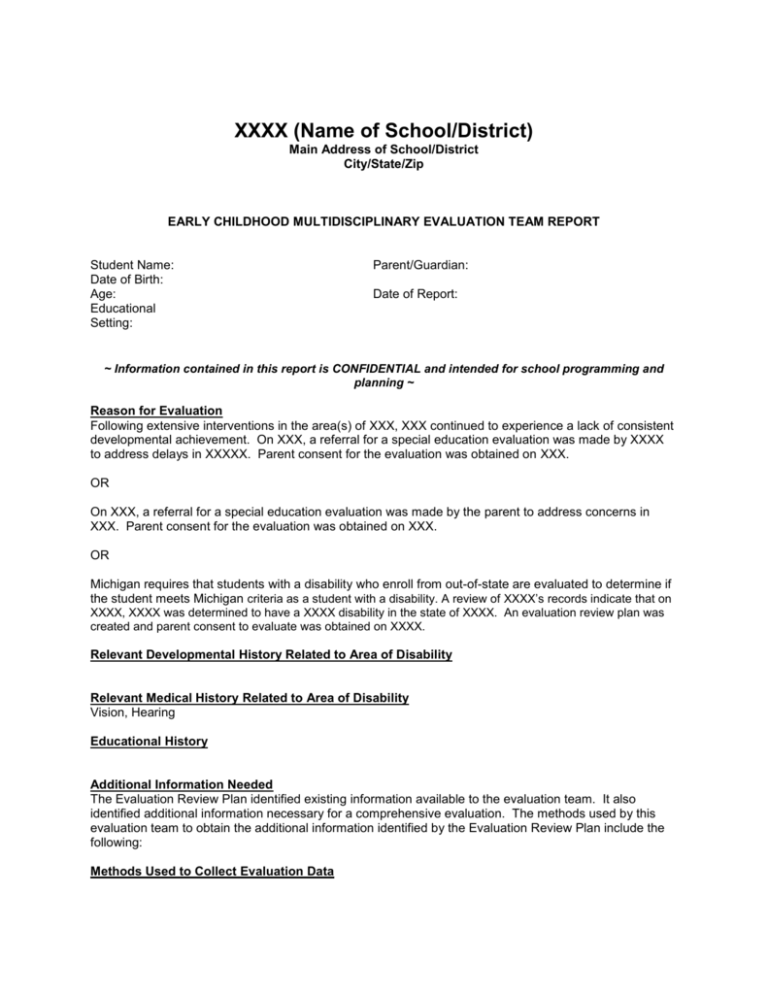
XXXX (Name of School/District) Main Address of School/District City/State/Zip EARLY CHILDHOOD MULTIDISCIPLINARY EVALUATION TEAM REPORT Student Name: Date of Birth: Age: Educational Setting: Parent/Guardian: Date of Report: ~ Information contained in this report is CONFIDENTIAL and intended for school programming and planning ~ Reason for Evaluation Following extensive interventions in the area(s) of XXX, XXX continued to experience a lack of consistent developmental achievement. On XXX, a referral for a special education evaluation was made by XXXX to address delays in XXXXX. Parent consent for the evaluation was obtained on XXX. OR On XXX, a referral for a special education evaluation was made by the parent to address concerns in XXX. Parent consent for the evaluation was obtained on XXX. OR Michigan requires that students with a disability who enroll from out-of-state are evaluated to determine if the student meets Michigan criteria as a student with a disability. A review of XXXX’s records indicate that on XXXX, XXXX was determined to have a XXXX disability in the state of XXXX. An evaluation review plan was created and parent consent to evaluate was obtained on XXXX. Relevant Developmental History Related to Area of Disability Relevant Medical History Related to Area of Disability Vision, Hearing Educational History Additional Information Needed The Evaluation Review Plan identified existing information available to the evaluation team. It also identified additional information necessary for a comprehensive evaluation. The methods used by this evaluation team to obtain the additional information identified by the Evaluation Review Plan include the following: Methods Used to Collect Evaluation Data Xxxxx – Page 2 XXX, Title XXX, Title Xxxxx – Page 3 PRESENT LEVEL OF ACADEMIC ACHIEVEMENT AND FUNCTIONAL PERFORMANCE Teacher Interview Observations of Child in the Learning Environment Learning and Problem-Solving Development History of Instruction/Intervention Present Level of Learning and Problem-Solving Educational Implications Communication History of Instruction/Intervention Present Level of Receptive Language/Listening Comprehension Present Level of Expressive Language/Oral Expression Adapted Communication Present Level of Articulation Present Level of Fluency Present Level of Voice Educational Implications Social-Emotional History of Instruction/Intervention Present Level of Sense of Self Present Level of Responsibility for Self and Others Xxxxx – Page 4 Present Level of Play Skills Observable Behavior Educational Implications Physical Development History of Instruction/Intervention Present Level of Perceptual/Fine Motor Present Level of Gross Motor and Mobility Skills Present Level of Sensory Processing Present Level of Organization Educational Implications Adaptive Behavior and Functional Living Skills History of Instruction/Intervention Present level of adaptive behavior and functional living skills within the school environment Present Level of Self-Care Skills Educational Implications The Findings are not Primarily the Result of Certain Factors Other than the Suspected Disability [Provide evidence to support “rule-out” factors of MET face sheet] For example: XXX and his parents’ native language is English. A review of the vision and hearing screenings in the CA-60 as well as teacher and parent input revealed no concerns with these modalities. XXX has developed positive peer relationships both in the classroom and outside of school where he participates in a variety of activities. XXX’s teacher noted that XXX demonstrates good sportsmanship and gross motor skills are appropriate for his age. Cognitive skills fall within the average range. XXX received regularly scheduled interventions, and XXX’s parents did not provide any information that would suggest cultural, environmental, or economic factors as primary explanations for XXX’s difficulties that he is presenting with in the classroom. Summary Statement Xxxxx – Page 5 In assessing for whether XXX has a XXX and is in need of special education, the evaluation process determined: RECOMMENDATION TO BE CONSIDERED BASED UPON EDUCATIONAL NEEDS The result of this comprehensive evaluation indicates that XXXX meets the criteria under Rule 340.xxxx as a student with a xxxxxx impairment in the area(s) of XXX. The result of this comprehensive evaluation indicates that XXXX does not meet the criteria under Rule 340.xxxx as a student with a xxxxxx impairment. Katie Powers School Psychologist Nina Wagar Early Childhood Special Education Teacher Kelli Fenlon School Social Worker/ECSE Service Coordinator Amy Richards Speech and Language Therapist Susan Stackhouse Speech and Language Therapist Tracy Tunison Speech and Language Therapist Rebecca Villemure Speech and Language Therapist Sarah Crouse Registered Occupational Therapist Mary Johnson Registered Occupational Therapist Eric Dunlap Physical Therapist Christy Dunne Teacher Consultant of the Hearing Impaired Kim Seaney Visual Impaired and Orientation and Mobility Specialist Xxxxx – Page 6 TEST SCORE ADDENDUM Average standard scores fall within a range of 85 to 115 and are more reliable to report student performance than grade equivalents. (Name of Assessment): List Composite/Domain/Quotient/Index) Subtest(s) List Composite/Domain/Quotient/Index) Subtest(s) (Name of Assessment): List Composite/Domain/Quotient/Index) Subtest(s) List Composite/Domain/Quotient/Index) Subtest(s) Standard Score %ile Grade Equivalency Standard Score %ile Grade Equivalency
